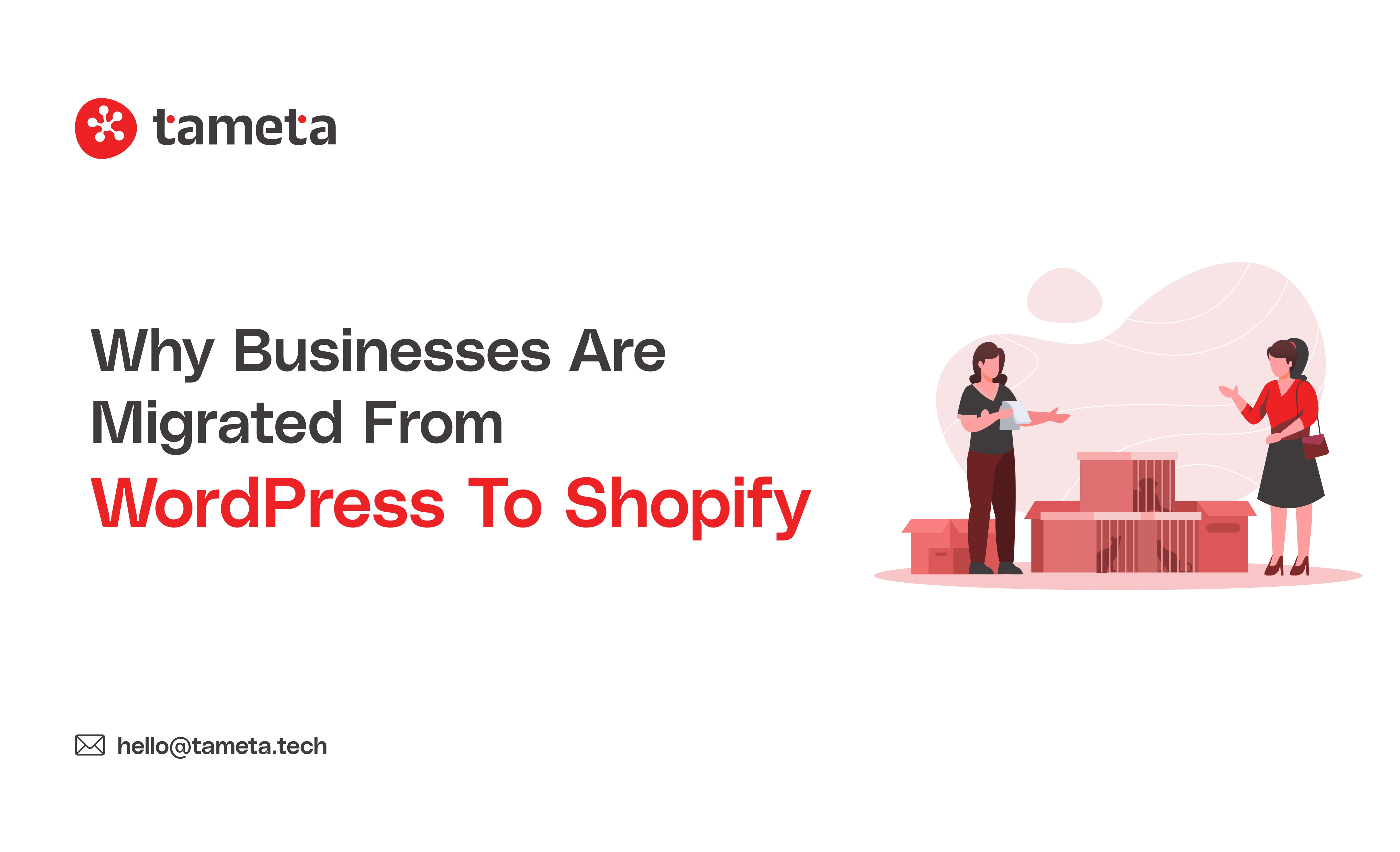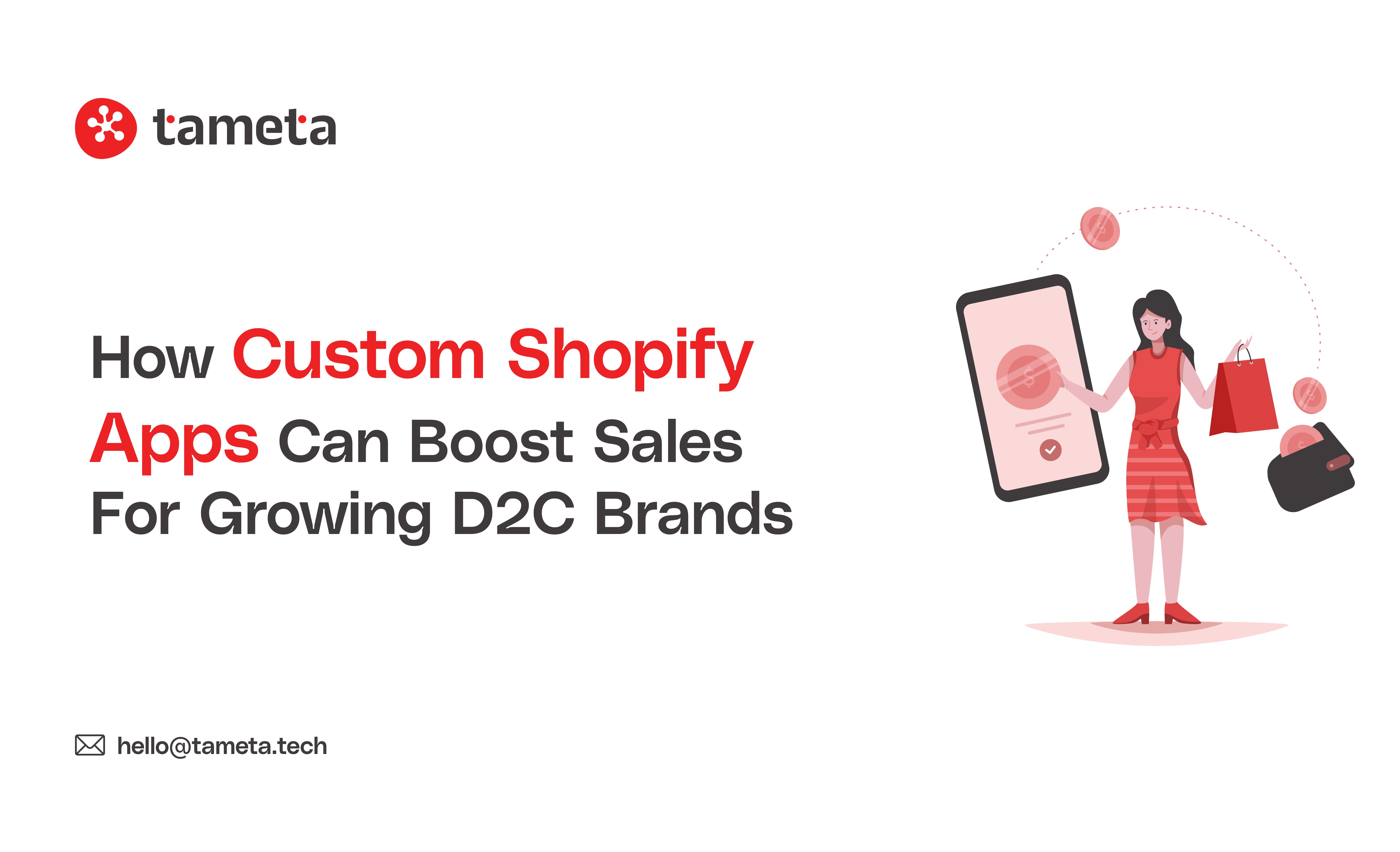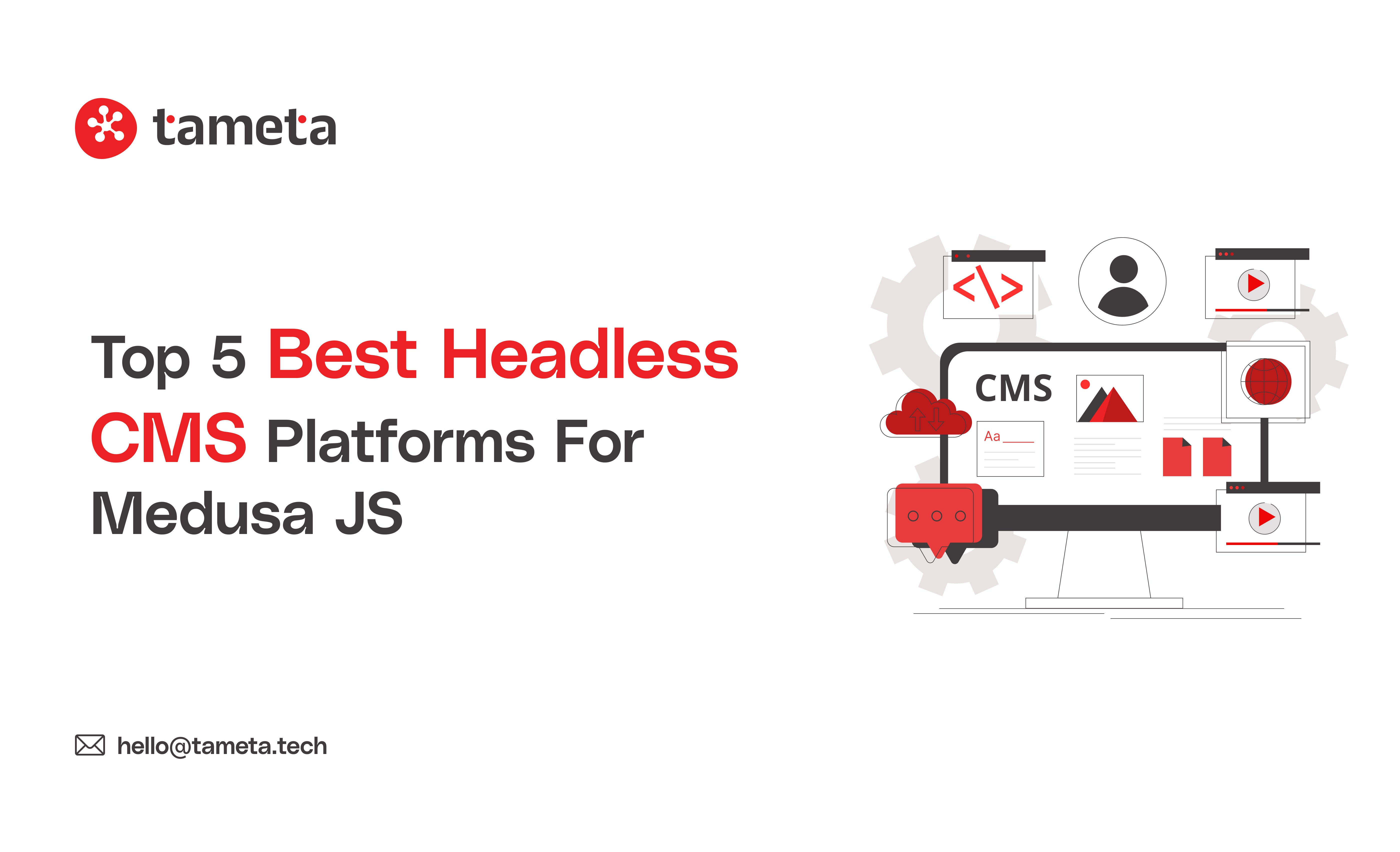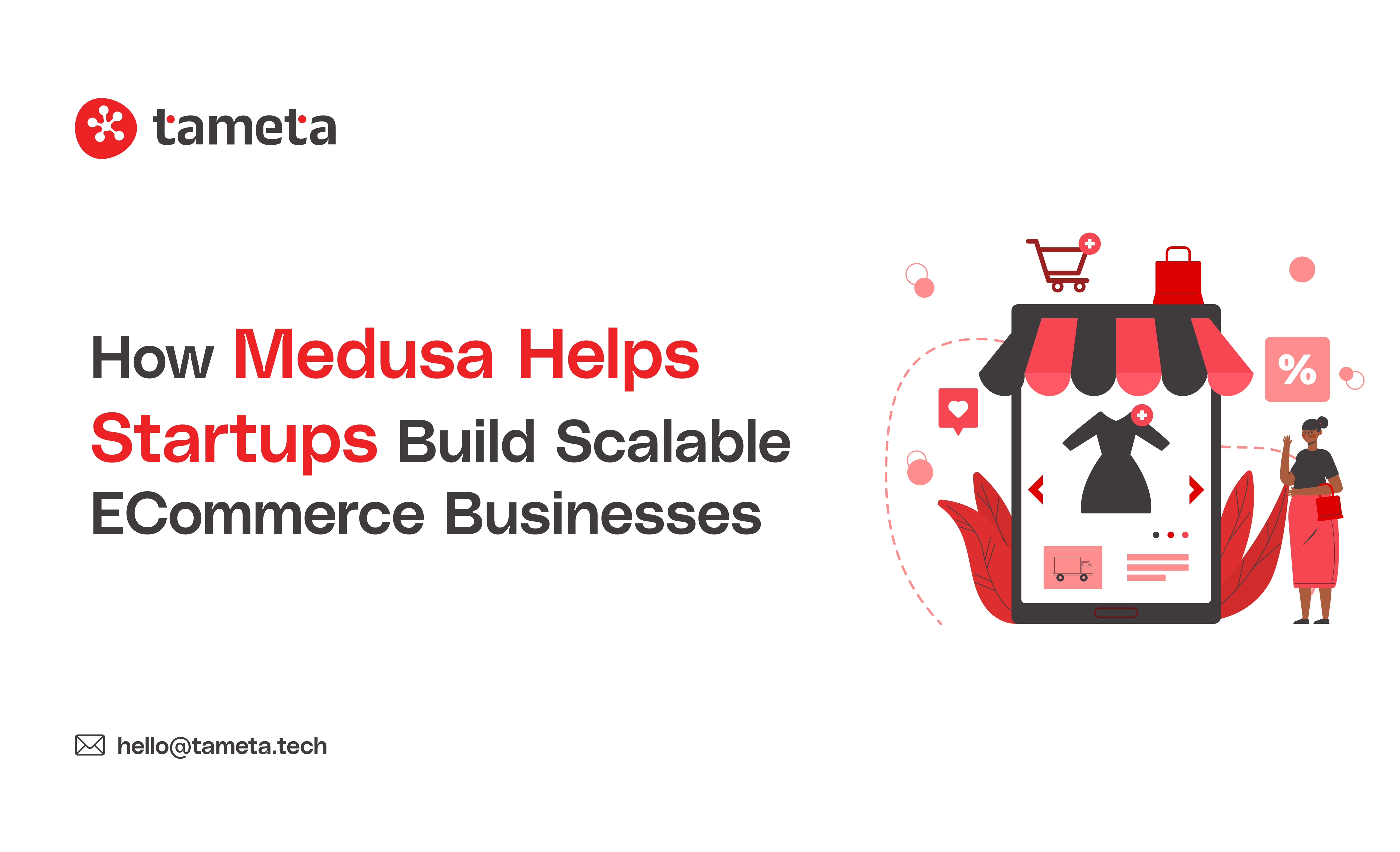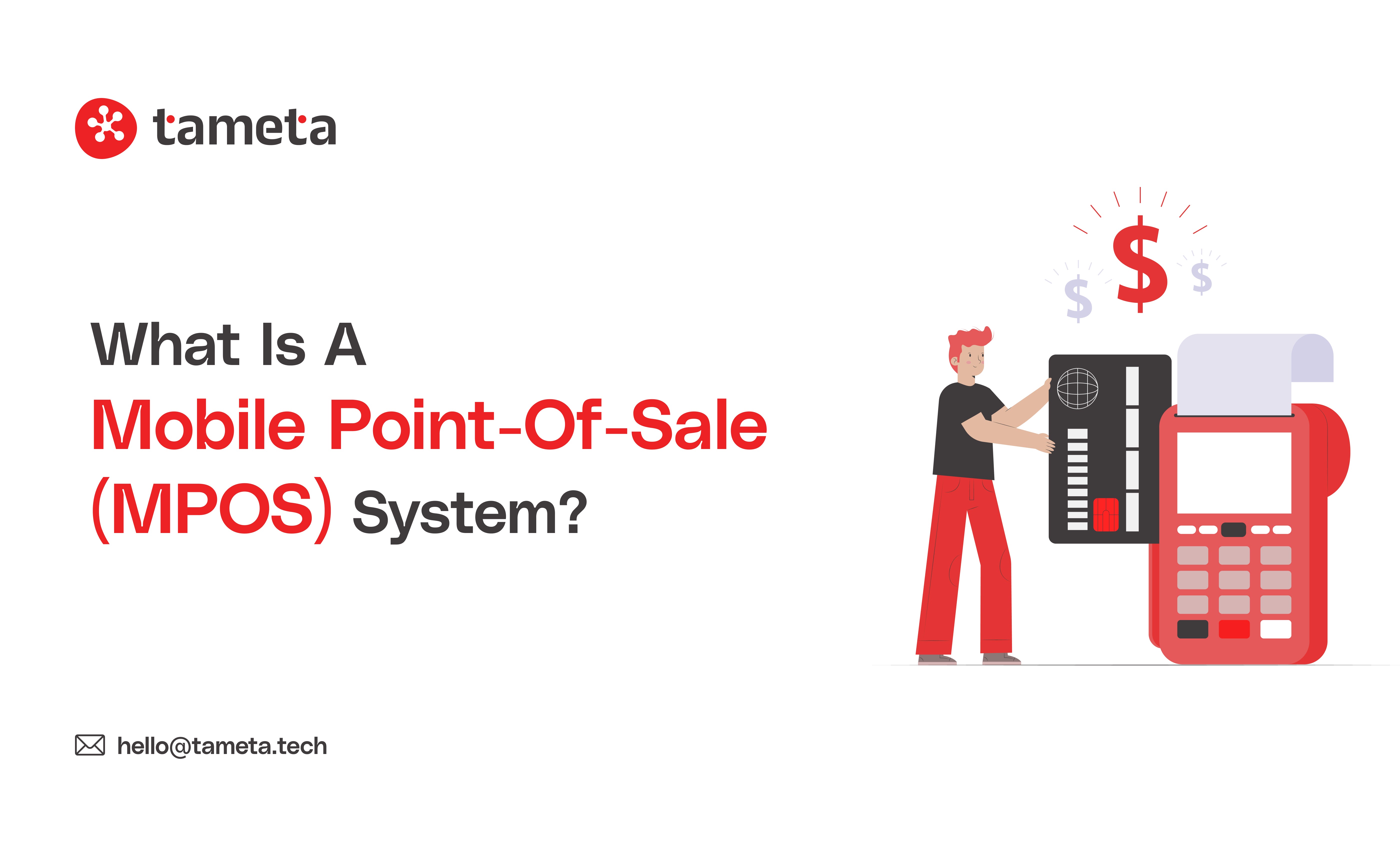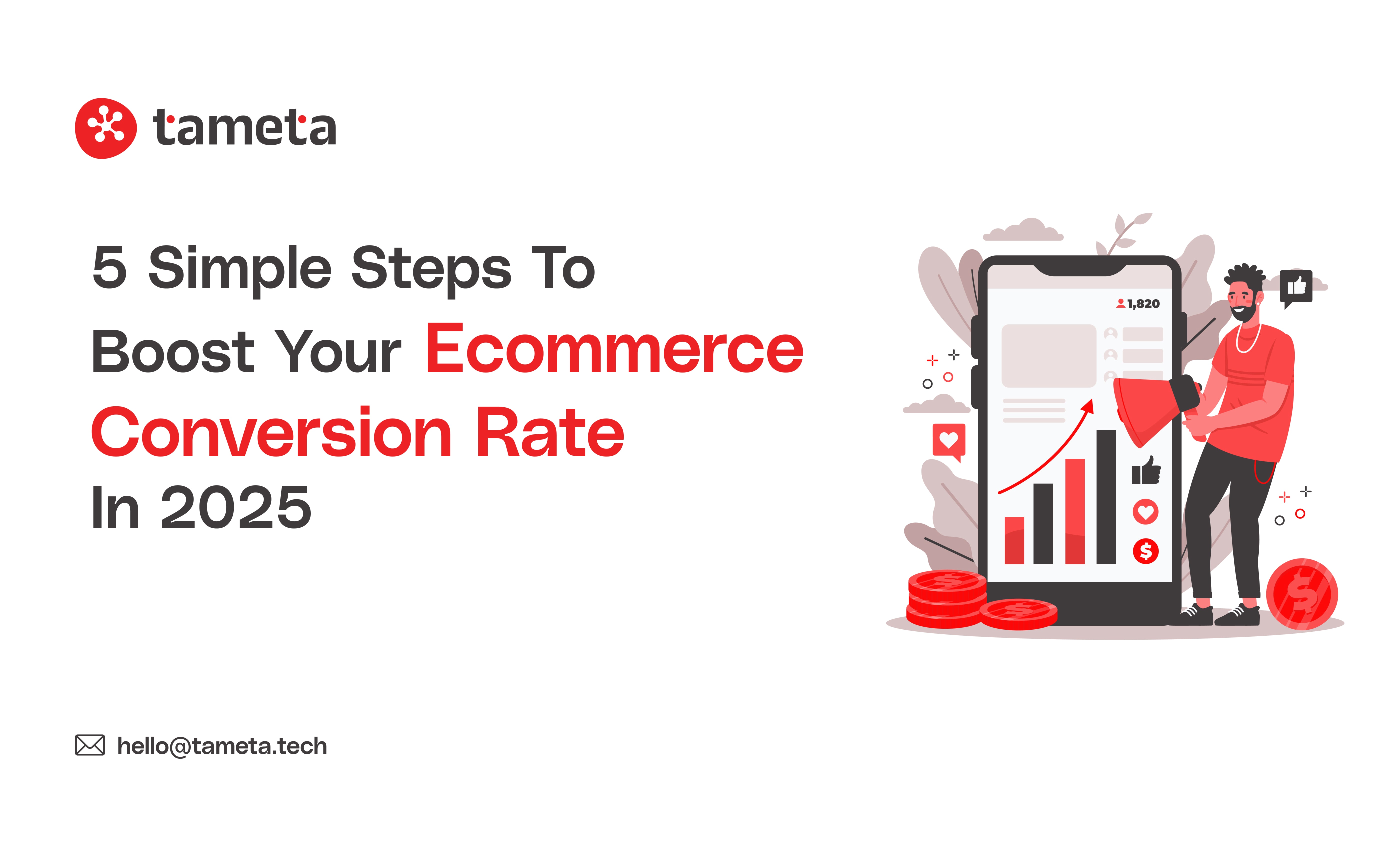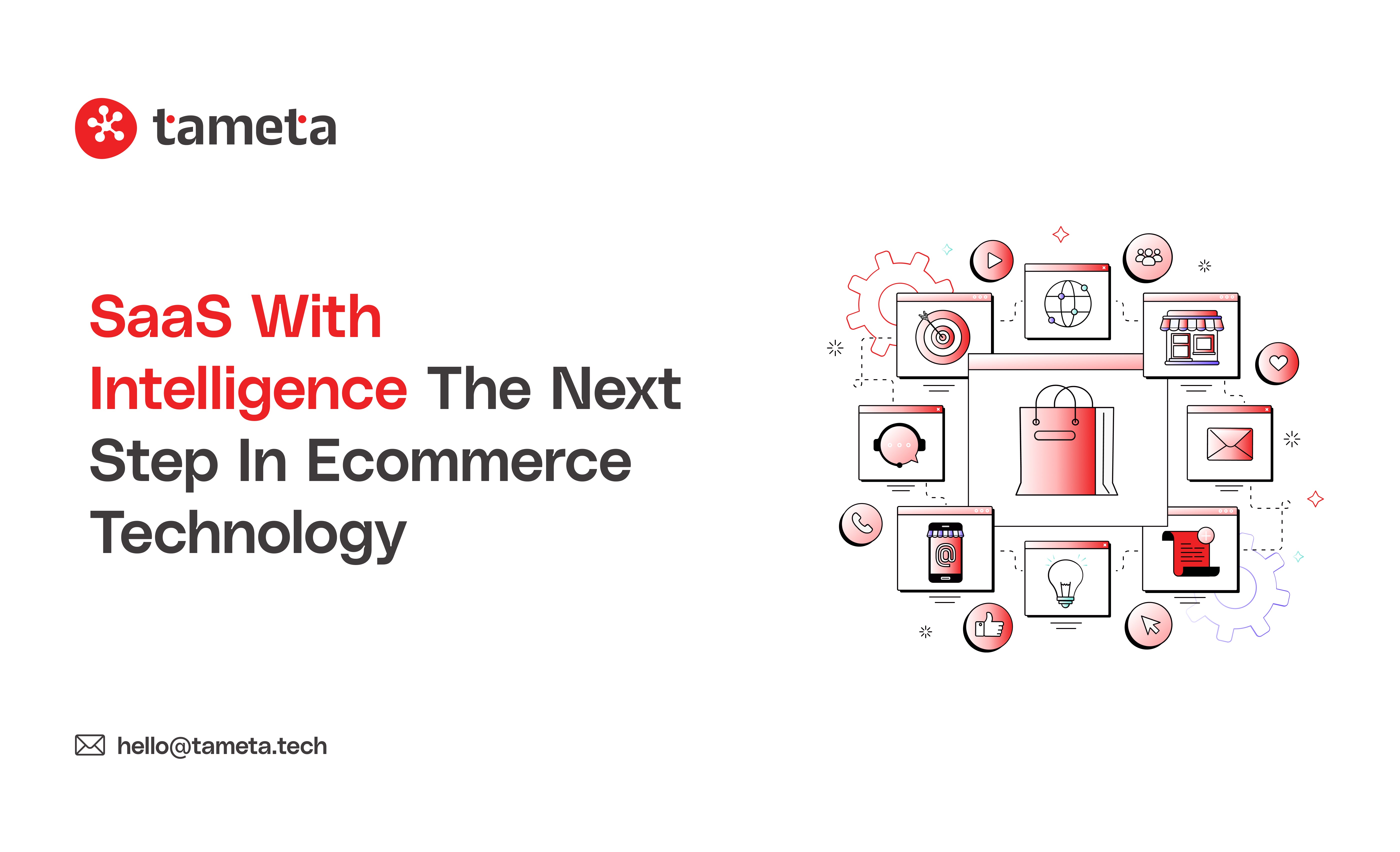Imagine your online store running like a well-oiled machine, where you make sales while you sleep. That’s the power of the right eCommerce platform and the right development partner. If you’re an eCommerce business owner looking to take your store to the next level, keep reading because this article will explain how choosing the right company for building your store using Medusa JS (a modern platform) can make a big difference.
As an eCommerce business owner (yes, you!), you probably ask questions like: Can I be more flexible? Faster? More in control of my store? The answer is yes, especially when you pick the right technology and the right agency. In this guide, we’ll explore what Medusa JS is, why it matters for eCommerce, and how to choose the best Medusa JS eCommerce development company in India. We’ll also introduce how one such company, Tameta Tech, can fit into your growth story.
You will finish this blog with actionable steps, notes to remember, and tips so you can actually do something after reading.
What is Medusa JS?
Before we talk about companies, let’s understand the platform.
-
Medusa JS is an open-source commerce engine built on Node.js (with APIs, headless architecture).
-
“Headless” means the backend (logic, inventory, checkout) is decoupled from the storefront (what the customer sees). This gives you more flexibility to design your store the way you want.
-
Medusa supports custom workflows, product models, multi-channel setups (web + mobile) and integrations with ERPs, CRMs. For example, in India, one big distributor used Medusa to power a B2B platform with $4 billion in digital business.
-
Using Medusa means you are often not locked into a rigid platform. You get better control over your store logic, data, and you can scale as you grow.
Why this matters for you (the eCommerce business owner):
-
You can customise checkout flows, product catalogs, and shipping logic, not forced into “one size fits all”.
-
You can connect other business systems you already have (ERP, CRM).
-
You can make your store future-proof, ready for growth, multiple markets, mobile and global.
Note: While Medusa gives great freedom, it also means you need a competent development partner, because you’re not choosing a pre-packaged “plug & play” solution.

Why Choose a Medusa JS eCommerce Development Company in India?
1. Cost-effectiveness
India-based development agencies typically offer skilled talent at more competitive cost compared to many western markets. You can get robust solutions without the extreme price tag.
2. Growing ecosystem & expertise
As Medusa becomes more popular, agencies in India are building strong expertise. For example, blogs list top Medusa JS agencies globally, and many are India-based or have Indian teams.
3. Time-zone and communication advantage
If you are based in India (or at least serving Indian market), having a partner in India reduces timezone friction, travel overheads, communication gaps. This leads to better delivery, faster iterations.
4. Scaling for Indian + global markets
Because the Indian eCommerce market is booming (see next section), picking an agency familiar with Indian logistics, payment methods, mobile-first behaviour helps you adapt your store to Indian realities, while also giving you a foundation for global growth.
The eCommerce Market in India: Why Now Is the Time
To understand why this decision matters, let’s look at market numbers:
-
The Indian eCommerce market was valued at around US$147.3 billion in 2024 and is growing at a ~18.7% CAGR (compound annual growth rate) through to 2028.
-
In India, Tier II and Tier III cities contribute a large portion of eCommerce growth and rising digital literacy + smartphone penetration make growth easier.
-
Globally, the eCommerce market is projected to hit US$7.4 trillion in 2025 in broader sense of digital commerce.
What this means for you:
-
There is a big opportunity for your store to grow, reach new customers.
-
A solid technical foundation now will pay off later.
-
If you wait, you risk falling behind competitors who have modern architecture and can expand quickly.
Tip: If you plan to expand beyond India, make sure your platform supports multi-currency, multi-market, scalable traffic. Medusa can help with that.
What to Look for in the Best Medusa JS eCommerce Development Company
If you are going to choose a company, here are the key criteria; turn them into a checklist.
Medusa JS Expertise
Make sure they have real experience with Medusa JS (not just “we work with Node.js”). Ask:
-
How many Medusa projects have they done?
-
Are they familiar with Medusa’s architecture: headless, workflow engine, API-first?
-
Are they able to show case-studies? For example, migrating from legacy platform to Medusa.
Portfolio & Use Cases
-
Have they built stores similar to your business size (startup / mid / enterprise)?
-
Do they have eCommerce builds in retail, B2B, marketplaces?
-
Do they have Indian market experience (payments, logistics, local regulations)?
Technical Stack & Integrations
Check if they can integrate:
-
Payment gateways popular in India (UPI, wallets)
-
Shipping/logistics integrations
-
CMS, ERP, CRM, PIM systems
-
Multi-store architecture, if needed
-
Performance optimisation, security, mobile-first
Also check if they understand best practices: e.g., checkout design.
Support & Maintenance
After launch is just the beginning. Your store will need updates, feature additions, monitoring. Ask:
-
What support packages do they offer?
-
Are they responsive?
-
Will they help you scale / grow?
Transparent Pricing & Time to Market
-
Do they give transparent pricing and timelines (MVP in 8-12 weeks is often cited in Medusa agency content).
-
Avoid agencies that treat Medusa like an old monolith and charge huge unnecessary costs.
Fit with Your Business
-
Size of agency vs your business needs (startup may prefer agile small team; large enterprise may need big team).
-
Cultural and communication alignment (you should feel comfortable working with them).
-
Understanding of your business domain (fashion, electronics, subscription, B2B etc).
Note: Create your own checklist table with these items and score each agency when you go through proposals.
Why Tameta Tech Could Be Your Partner of Choice
Now let’s talk about one specific company: Tameta Tech, as you target “Best Medusa JS eCommerce Development Company in India”, this is a candidate worth exploring.
Why mention Tameta Tech?
-
They position themselves as an eCommerce development agency focused on modern stacks, custom solutions, and have India presence.
-
Because you are looking for a partner, Tameta Tech could align well with your business needs.
-
It is always wise to have 2-3 vendor options, but you should include Tameta Tech in your evaluation.
What you should check with Tameta Tech:
-
How many Medusa JS projects they have done.
-
Case studies of Indian clients (or international) with growth results.
-
Their ability to deliver within your budget and timeline.
-
Their post-launch support offerings.
-
Their strategic fit with your business (you as eCommerce business owner), how they will understand your store, your customers, and your workflows.
Reach out to Tameta Tech and ask for a discovery call. Ask for their Medusa JS case studies, what their process is, how they work with clients like you (eCommerce business owners, not just technical folks).
How the Journey Works: From Idea to Launch
Here’s an end-to-end view of how your Medusa JS store project would typically unfold, so you know what to expect.
Step 1: Discovery & Scope
-
You (the business owner) share your vision: store type (B2C/B2B), product catalog size, target markets, integrations (ERP, payment gateways).
-
Partner (e.g., Tameta Tech) runs workshops: user journeys, tech stack, timeline, budget.
-
Decide on MVP (minimum viable product) vs full launch features.
Step 2: Architecture & Design
-
Define data models: products, categories, variants, pricing.
-
Define storefront technologies (Next.js, React etc if using Medusa front end).
-
Design UI/UX: keeping in mind mobile first, usability, localisation.
-
Define backend workflows: inventory, checkout flows, shipping, tax.
-
Technical planning for integrations.
Step 3: Development & Build
-
Backend: Medusa JS set up, API endpoints, customisations.
-
Frontend: Build store, user interface, mobile responsiveness.
-
Integrations: Payment, shipping, ERP/CRM, analytics.
-
Test data migration if you are migrating from an older platform.
Step 4: Testing & Quality Assurance
-
Functional testing (does everything work?).
-
Performance testing (how fast does the site load?).
-
Security audit.
-
Usability testing: you might involve a small group of customers.
-
Mobile & cross-browser testing.
Step 5: Launch & Go Live
-
Deployment: Set up cloud hosting, CI/CD pipeline, backups.
-
Monitoring: Use analytics, logging, error tracking.
-
Go live: Announce launch, monitor first orders, make any immediate fixes.
-
Allow some buffer after launch for unexpected issues.
Step 6: Growth & Optimisation
-
Analyse data: what products are selling, what checkout steps drop off.
-
Optimise: Based on data, tweak product placement, checkout flow, shipping logic.
-
Add features: loyalty programmes, multi-vendor, subscriptions, marketplace.
-
Scale: Add new markets, languages, currencies if required.
Remember: Launch is just the start, the real value comes from how you scale and evolve your store. A good agency will help you beyond launch.

Why Medusa JS + Indian Agency = Success for You
Let’s summarise how everything ties together for you:
-
You get a modern, flexible platform (Medusa JS) that gives you control and scalability.
-
You get cost-effective, skilled development support via an experienced Indian agency (which knows Indian market and global too).
-
You get to align your store for current growth (India eCommerce boom) and future expansions (global, headless, mobile).
-
You reduce risk of being locked into a legacy platform that limits you.
Case Study Snapshot
Here’s one real example (so you can see what is possible):
Redington, India’s large tech distributor, built a B2B platform with Medusa JS. They achieved:
-
87% improvement in average response time.
-
24× improvement in throughput (requests per minute) compared to previous platform.
-
Real-time ERP integration, multi-model commerce flows (stock-and-sell, made-to-order).
If companies of that size can benefit, imagine what you (medium/small size) can do with the right setup.
Tip: When discussing with your potential agency, ask for such metrics: performance improvements, business metrics, not just “we built a store”.
Tips, Notes & Quotes
Tips
-
Tip #1: Choose scope carefully. Don’t try to build everything at once; focus on core features first (MVP) and scale later.
-
Tip #2: Emphasise mobile and site speed, a slow store loses customers.
-
Tip #3: Use analytics from day one. Know what customers are doing in your store.
-
Tip #4: Prepare for future growth: multi-store, multi-currency, localisation. Even if you don’t need it now, your architecture should allow it.
-
Tip #5: Keep your business logic (pricing, shipping rules) simple, but document it; our development partner will need it.
Notes
-
Note: Medusa JS requires a partner who understands headless commerce. Not all agencies do, so validate experience.
-
Note: While cost matters, cheapest is not always best. With eCommerce you don’t want constant firefighting later.
-
Note: Ownership matters. With Medusa, you own your data and logic, so keep backups and auditing.
-
Note: Since the Indian market has its quirks (mobile data, regional languages, cash on delivery, UPI), make sure your store is localised.
“In India, ecommerce is a marathon, not a sprint.”
This means: build with the long term in mind, pick an architecture and partner that supports you for years.

How to Select Your Agency: 5-Point Action Plan
-
Write down your business requirements: product count, markets you serve, logistics/shipping, payment methods, expected growth.
-
Shortlist 3 companies: include Tameta Tech and two others. Send them your requirements and ask for proposals.
-
Evaluate proposals using the checklist from the section above (expertise, portfolio, integrations, support, pricing).
-
Ask for case studies and references: ask previous clients what improvements they saw, what challenges they faced.
-
Start with a pilot / MVP: Launch core features first (storefront, products, checkout, payment). Then plan phases for added features (loyalty, multi-vendor, subscriptions etc).
Remember: Your store is your business’s digital front door. It should not just work, it should delight your customers.
Common Mistakes to Avoid
-
Picking an agency because they are the cheapest. You’ll pay later in performance, flexibility, support.
-
Choosing a closed platform (legacy) when you need flexibility.
-
Ignoring mobile-first design. Many users in India shop on mobile; make sure your store is fast on mobile.
-
Not thinking about post-launch growth phases. If you stop at launch, you’ll stagnate.
-
Not owning your data or logic. With Medusa you can, but with some platforms you are stuck.
You May Also Like to Read this Article - How Medusa Transforms Omnichannel Returns and POS Systems
Why Your Business Will Grow With This Approach
By going with Medusa JS and partnering with the right Indian agency, you position your business for:
-
Faster time-to-market (you’re not waiting for platform constraints).
-
Better performance (faster store, happier customers).
-
Flexibility (you change product lines, new markets, new checkout flows).
-
Cost efficiency (you invest in growth rather than platform locks).
-
Long-term control (you own your store logic and data).
In today’s fast-moving eCommerce world, these are big advantages. When you grow, you don’t want to hit a ceiling because your platform or agency choice limits you.
FAQ’S
1. What is Medusa JS in eCommerce?
- Medusa JS is an open-source, headless eCommerce platform built with Node.js. It allows developers to create fully customized online stores by separating the backend (logic, checkout, inventory) from the frontend (store design). This gives businesses complete control, better flexibility, and faster performance compared to traditional eCommerce platforms.
2. Why choose Medusa JS for your eCommerce store?
- You should choose Medusa JS because it’s fast, flexible, and developer-friendly. It helps you create a custom store that fits your exact business needs, supports multiple sales channels, and scales easily as you grow. Its open-source nature gives you ownership of your data and freedom to integrate with any tool you use.
3. What does a Medusa JS eCommerce development company do?
- A Medusa JS eCommerce development company designs, builds, and maintains online stores using the Medusa JS framework. They handle backend setup, frontend integration, payment gateways, shipping systems, and post-launch support. These companies help businesses launch fast, perform better, and grow their eCommerce presence with custom, scalable, and secure solutions.
4. Why hire an Indian Medusa JS eCommerce development company?
- Hiring a Medusa JS eCommerce development company in India offers cost-effective services, skilled developers, and quick delivery timelines. Indian teams are experienced with global eCommerce standards, support local payment and logistics systems, and provide ongoing support at affordable rates. This makes India a top destination for high-quality Medusa JS development.
5. How is Medusa JS different from Shopify or WooCommerce?
- Unlike Shopify or WooCommerce, Medusa JS is completely open-source and headless. It gives full control over design, data, and integrations without monthly fees or restrictions. While Shopify and WooCommerce are easier for beginners, Medusa JS offers greater flexibility, speed, and scalability for growing businesses needing a custom eCommerce solution.
Conclusion
If you are an eCommerce business owner ready to step up your game, then here’s what you should do next:
Start talking to agencies today, including Tameta Tech.
Use the checklist above to evaluate them carefully.
Build your store on a platform (Medusa JS) that gives you freedom, control, scale.
Focus not just on launch but on growth phases; this is a long-term journey.
Keep your customers (you) in focus: fast, mobile-friendly, localised store will win.
Remember: Your store is more than a website; it is your brand, your experience, your business engine. Choose wisely, partner well, and the right Medusa JS eCommerce development company in India will become your growth partner.
Grow your online store with Tameta Tech, your trusted eCommerce development partner. We build fast, easy, and beautiful stores using Medusa JS that help you sell more every day. Let’s turn your business idea into a powerful online store. Start your eCommerce success journey with Tameta Tech today!





